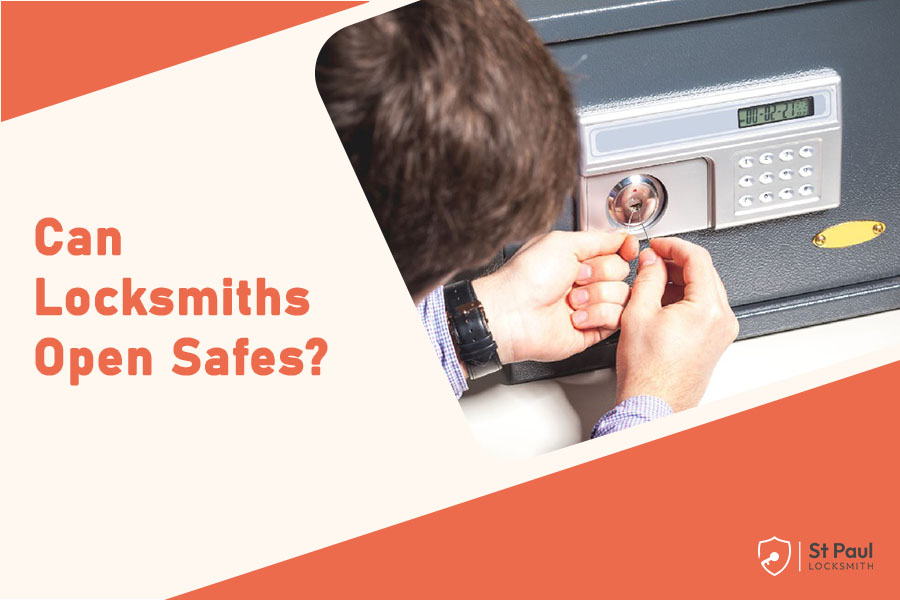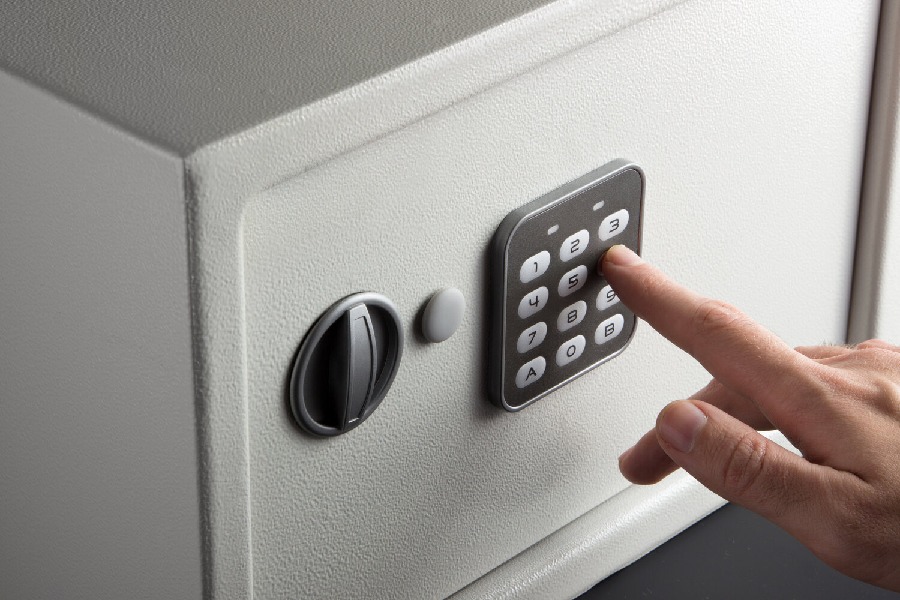When faced with a locked safe and no way to access it, many wonder about their options. Can locksmiths open safes? This question opens up a fascinating world of security, skill, and specialized knowledge in the locksmithing profession.
In this article, we’ll explore the capabilities of locksmiths when it comes to safes. We’ll discuss the different types of safes, from basic mechanical models to sophisticated electronic ones, and how their complexity affects a locksmith’s ability to open them.
We’ll also dive into the legal and ethical considerations surrounding the safe opening, as well as the specialized tools and techniques used by professionals.
We will also cover when it might be necessary to call in a safe technician instead of a general locksmith. By the end, you’ll have a clear understanding of what to expect when faced with a locked safe situation.

Can Locksmiths Open Safes?
Yes, many locksmiths can open safes, but their ability depends on their expertise and the safe’s complexity. Locksmiths offer various security services, including lock installation, repair, and key cutting. Some specialize in safe opening, with additional training to handle complex locking systems.
These specialists understand both mechanical and electronic safe mechanisms. However, not all safes can be easily opened, even by skilled locksmiths. The difficulty varies based on the safe’s type, age, and security features. Some may require specialized tools or techniques.
When facing a locked safe, it’s best to seek a locksmith with specific safe experience. They’ll have the necessary expertise and equipment to handle the job efficiently and safely. This minimizes the risk of damage to the safe or its contents.
Methods Locksmiths Use to Open Safes
Non-Destructive Entry
Skilled locksmiths primarily use non-destructive methods like lock picking and manipulation. Lock picking involves using specialized tools to simulate the correct key.
Manipulation relies on touch and sound to decipher the lock’s internal workings. These techniques require extensive training and are most effective on simpler or older mechanical locks.
Destructive Entry
When non-destructive methods fail, locksmiths may resort to controlled drilling. They target specific points on the safe to access the locking mechanism or create a viewing port for a borescope. In extreme cases, cutting the safe open might be necessary, though this is typically a last resort due to its destructive nature.
Electronic Safe Opening
For modern safes with electronic locks, locksmiths may attempt to bypass the system using specialized electronic tools or exploit software vulnerabilities. So, can a locksmith change a safe combination?
Yes, a locksmith can change a safe combination. They have the expertise and tools to reset or reprogram the combination on various types of safes, including both mechanical and electronic ones.
These methods require in-depth knowledge of electronic systems and constant updating of skills to keep pace with evolving technologies.
Challenges with Opening Safes
Types of Difficult Safes
High-security and antique safes present significant challenges for locksmiths. Modern safes often incorporate advanced mechanisms, multiple security layers, and anti-tampering devices.
Antique safes may have unfamiliar or worn mechanisms. These factors can make both non-destructive and destructive entry methods more complex and time-consuming. Can a locksmith open a combination safe?
Yes, a locksmith can open a combination safe. They have specialized tools and techniques for this purpose, such as manipulation, drilling, or using a borescope.
Potential Damage Concerns
Opening a safe carries risks of damage to both the safe and its contents. Destructive methods like drilling or cutting can compromise the safe’s integrity. Even non-destructive techniques may wear down internal components. Contents can be damaged by debris, heat, or shifting during the opening process.
Importance of Certified Locksmiths
Choosing a certified locksmith is crucial. These professionals have extensive training in various safe-opening techniques and stay updated on the latest technologies. They can assess each situation to minimize damage risks. Certified locksmiths also adhere to ethical standards and understand legal implications.
Legal and Ethical Considerations
Locksmiths must verify safe ownership before proceeding. This typically involves checking documentation like purchase receipts or property deeds. They ensure all actions are lawful and may require additional verification or legal presence in certain situations. Maintaining detailed records of safe-opening jobs is also essential for legal protection.

Conclusion
In conclusion, while many locksmiths possess the skills to open various types of safes, the process can be complex and challenging. We hope this article has helped you understand the methods locksmiths use, from non-destructive techniques to more invasive approaches.
It’s crucial to recognize the potential risks involved and the importance of hiring a certified, experienced professional. Remember, legal and ethical considerations play a significant role in safe opening services.
Can locksmiths open safes? This guide has revealed that the answer is not a simple yes or no. By exploring the challenges and intricacies of safe opening, we’ve highlighted why it’s not a task to be taken lightly.
Whether you’re facing a locked safe situation or simply curious about the process, this knowledge empowers you to make informed decisions about safe security and access.


